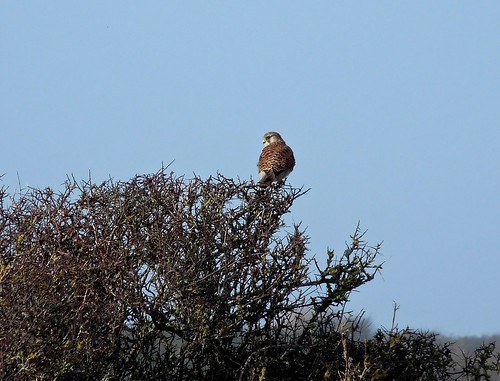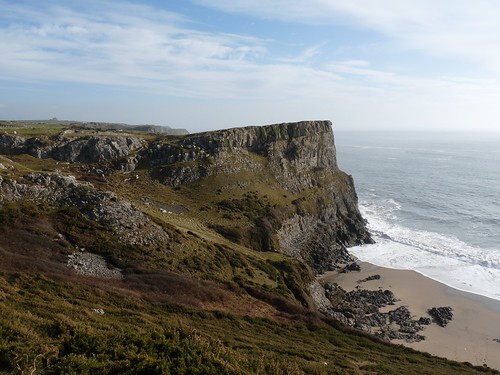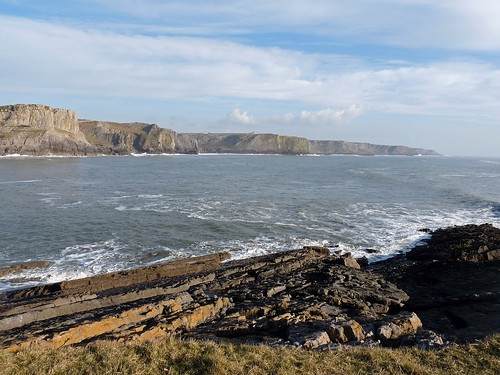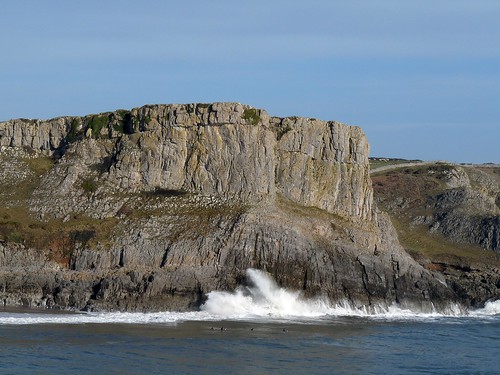On Saturday we headed down to Mewslade Bay on Gower to see how the bird life had changed since my last visit when the country had been in the grip of heavy snow and freezing conditions. It was immediately apparent that the large flocks of Redwing and Thrushes that had been dominating the area had dispersed completely, which certainly made the driving far less hazardous on the country lanes than it had been. In fact I didn’t see a single Redwing throughout my visit. The number of Blackbirds however was still very high as surprisingly were the number of Wrens that were visible. I was very pleased to see that such a large number had survived the harsh weather as it is the often the smallest species that are the first to succumb to the elements. The first signs of Spring were also definitely in the air with the first buds starting to appear on a couple of bushes and a pair of Collared Doves necking each other in a nearby tree.
On the way down to the coast we took the high route through Mewslade valley and stopped off at the Nitten field in the hope of spotting one of my bogey birds, a Hen Harrier. They are known to frequent the area so hopes were high. Whilst we waited numerous Reed Buntings flitted through the sacrificial crop and a solitary Yellowhammer was seen flying past. Within a couple of minutes we had a good candidate on our hands in the shape of a large raptor that had landed on the grass on the opposite side of the valley. Unfortunately I am not brilliant at identifying birds of prey beyond the common species yet and as a result couldn’t state a positive ID without seeing the bird in flight. We moved to a higher vantage point and waited for it to get restless. After a short wait the bird took to the wing and flew directly towards us but due to our height at a lower level than us. What we were treated to was a superb vision of a back lit Buzzard soaring slowly beneath us, every one of its feathers picked out in absolute clarity. Seeing these birds every day it is easy to take them for granted but a moment such as that helps to remind you just how amazing, and large, they are.
As were reached the coast we disturbed a femaleKestrel which I then spent the next half hour or so trying to stalk to get a decent picture. Unfortunately I fear it was wise to my tactics as it always managed to land just too far out of range for my camera. The sight of me crawling along the side of a stone wall seemed to amuse the local surfers though so all was not lost. We spent the next hour so walking the length of Mewslade and Fall Bay before arriving at Tears point and the end of our walk for the day. Bird wise it was relatively quiet with the only notable species being Meadow Pipit, an Oystercatcher and the usual Gulls.
The lack of wildlife didn’t really matter as the highlight as always with this part of the world was the scenery. Conditions were very hazy due to the amount of spray that was being thrown into the air but at certain angles the lighting still managed to catch this rugged coastline perfectly. If you have never visited this part of the world then I highly recommend it.







0 Comments